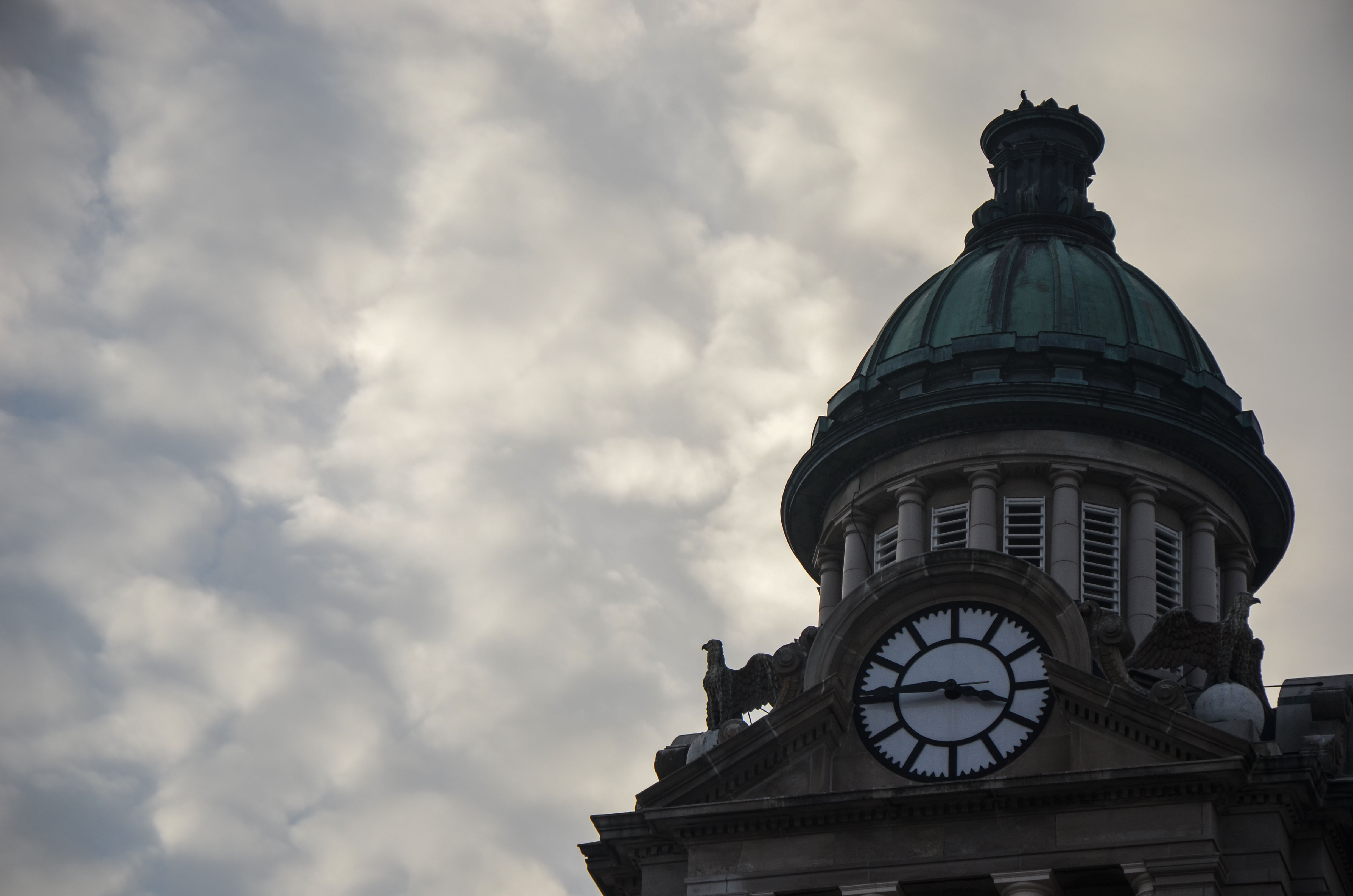“Court Clock”
This image, in contrast with Tanur’s image, presumes that the concept of time has a “capital-T Truth” value, and that time is indisputable and concrete. The clock in this image is singular, large, and set against the austere background of a courthouse in a small Midwestern town. The face of this particular clock is interesting in that it does not display arabic or roman numerals, but simple lines that take the place of that time-telling norm, and this clean and direct styling of the clock points to a conception of time that is functionalistic and utilitarian. Viewing the image through a semiological lens, and with the knowledge of the clock’s placement atop a courthouse, one can view the eagles on either side of the clock as symbols that further dare the viewer to question the validity of time. One can see that it is 3:45 according to the clock, and the outlooking eagles demand a sense of regality and indisputability; they screech that it is 3:45, and there are no debates over that fact of time as a linear and concrete subject.
Also interesting to note is the frame of the photograph. One can see that the photographer has had to angle the camera upward in order to take this shot, and this implies height on the part of the clock. Setting the clock against the sky also helps to imply height, and this begs the question of power differentials. The clock demands to be seen, as it sits high atop the landscape of the town. It acts as both the viewed and the viewer; the seen and the all-seeing. The eagles framed on either side help to promote this implication, as they suggest a level of justice, regality, and omniscience associated with the heavens -- a “bird’s eye view.”
Important in interpreting this photo is the sociological implication of the clock’s position in the town. The largest building in town aside from some rivaling churches, the courthouse clock sits in a landscape where the residents typically lean right politically, while the college in town typically draws students who lean left. The dynamic of the town is ever-changing, and demonstrations by the left are frequently held in front of the courthouse, with the clock sitting high in the background, overlooking all actions. This specific contextual knowledge, applied with a semiological view of the clock and the backdrop of the clouds, can lead to a reflection of social apprehension. The clock, the focus of the photograph, does not garner the focus of light, but is backlit and shadowed by the sky. Further, the clock is not the center of the photograph, implying a relationship between the two halves of the image, perhaps in contrast with one another. The clock appears to be overshadowed by the clouds, and a sense of doom or the thought of “time running out” implies a much different message than Tanur’s image, which suggested that time is relative. This image, showing a darkened sense of time and the lighter backdrop (or future) suggests the phrase, “Find a silver lining.” This image thus begs the question of the viewer what time, as a concrete subject, means for them. Is time something to be looked upon with apprehension or hope in a constantly changing landscape?

Commentary on Rachel Tanur's Works: Paris Clocks 02